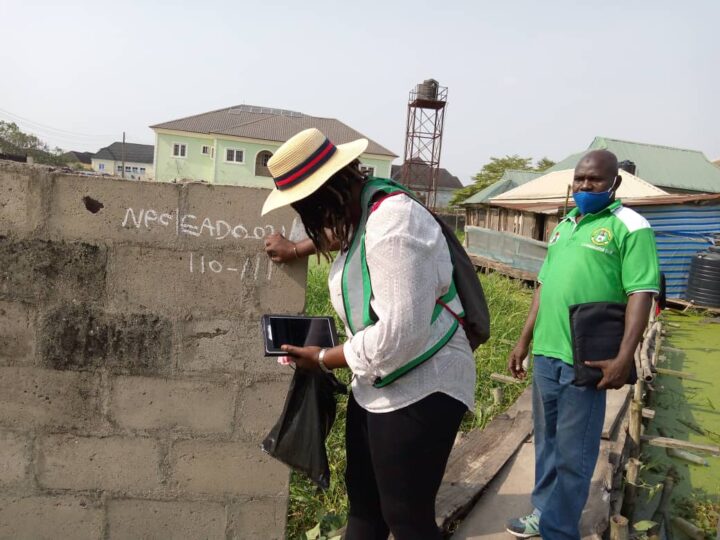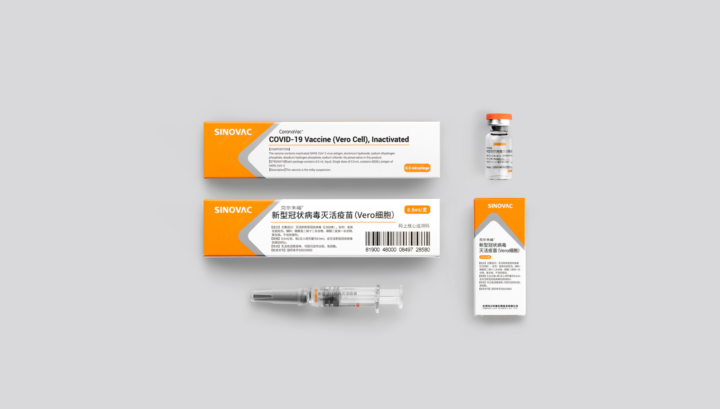Dogo, gentle and unruffled, her white skin laced in black prints and one of her pointed ears bearing her name tag, grazes on the green field at the ranch. At the sight of a camera, she raises her head as though posing for a photoshoot. Then, she returns to grazing on the pasture, strolling behind her mother, Arike. She was born on the ranch on February 15, 2018. Her mother, Arike, who was also born at the farm in 2015, has had four other calves thereafter. But among her peers, Dogo remains her master’s delight as she produces the highest quantity of milk in the dairy farm of about 52 cows.
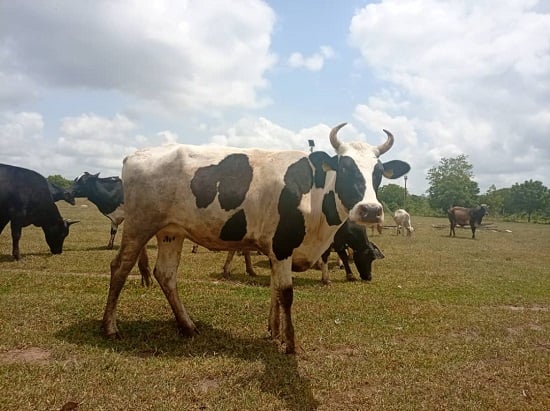
At her peak, she supplies 15 litres of milk every day. Off-peak, she produces 12 to 13 litres daily. Her close friend, named CBN, produces an average of nine litres, and her mother, 10 litres daily. Dogo has brought more glory to the farm and a sweet smile to her 39-year-old owner, Moyosore Olatunde Rafiu.
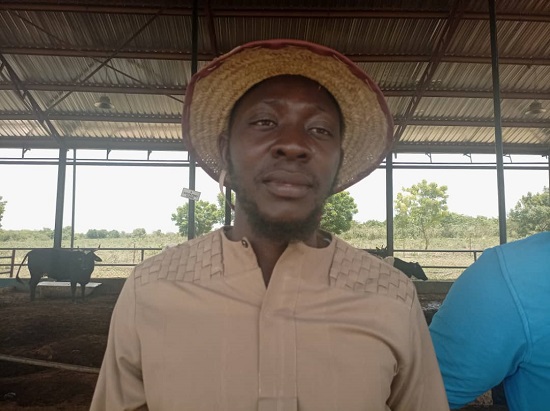
At Olora village in Iseyin, Oyo state, where Dogo lives with CBN, Ashia, Arike and her four calves, Moyosore cannot stop speaking glowingly of Dogo. To him, Dogo is everything a dairy farmer needs to be happy as a businessman. Dogo and other animals housed under a blue roof are products of genetically modified cows. In other words, they were produced through artificial insemination of local and foreign breeds. Moyosore calls it the future of the dairy sector in Nigeria.
When Moyosore graduated from the Federal School of Surveying in Oyo town in 2014, he did not bother about hunting for white-collar jobs. He had a clear idea of what he wanted to do because his passion for animal husbandry had not waned. According to him, his passion for rearing animals began from childhood.
Advertisement
The Iseyin-born graduate began to rear goats, while he also set up a poultry and fish pond. He started rearing cows in 2009, yet he had up to 50 goats. It wasn’t easy for him to operate within the town as neighbours were always complaining about the smell from his compound. Then, he moved to a nearby village where he got 80 acres of land and continued his business. But there was a challenge. Moyosore wasn’t getting enough milk from the local cows. However, by 2014, he was introduced to cross-breeding by FrieslandCampina WAMCO, a leading dairy company.
BUILDING A SUSTAINABLE DAIRY INDUSTRY
Moyosore’s ranch is sited on 80 acres of land with a solar-powered borehole that supplies water across the farm. With the help of six full-time workers, Moyosore makes sure the animals do not lack anything. There is a good lighting system and a perimeter fence. But the cows are kept in two different sections. The local breeds occupy the latter part of the farm, while the chubby cross-breeds occupy the larger space at the entrance. The difference between the two sets of cows is obvious.
Advertisement
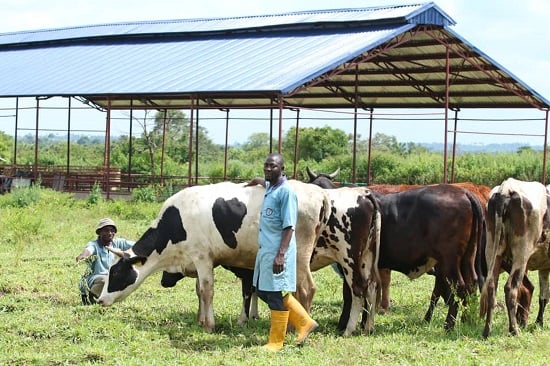
“These huge ones are genetically modified cows for milk production. They are different from our local cows. They are not aggressive. They have a high percentage of milk production. On average, they produce 10 litres of milk daily per cow, unlike our local cows that hardly yield two litres a day. The more milk you collect, the more money that comes into the pocket. They grow very fast compared to our local cows,” he said.
“When we started, we had a lot of challenges. Because it is a new innovation, a lot of my workers were not ready to adjust. They were not cooperating and they sabotaged all my efforts then. Through a lot of training, I was able to make them accept the new breeds. We synchronised about 12 cows then, but we were only successful with three.
“Presently, I have 25 local cows and the producing cows among them give at least two litres each daily. I have 27 cross-breed cows. The ones we milk give us an average of 10 litres per cow daily.”
His expertise did not come cheap though. With the new breed, Moyosore travelled to Kenya and Uganda for training on dairy management. Any seminar or workshop on animal husbandry does not evade him. He also proceeded to Kano, Kaduna and Jos to study other farms, exchange notes and learn about their challenges. And then he comes to brief his staff and trains them over and over.
Advertisement
Now, the knowledge of his staff has gone beyond the nomadic ways cows are bred. They speak of innovative ways to expand the farm and introduce new skills. It’s no longer business as usual. After milking the cows as early as possible in the morning, they mount cans of milk on a vehicle and take them to the collection centre of FrieslandCampina WAMCO in Iseyin.
“The business is a sustainable one. In the next few years, I want to be one of the best raw milk producers in the south-west — not by numbers, but by quantity and quality. I don’t want to have 100 cows. I want to have 300 good milking cows so that I can get 15 litres from each of them,” Moyosore added.
For Lawal Aminat, an 18-year-old undergraduate of political science at the Federal University of Lafia, Nasarawa state, there is a bright future in dairy. At her pastoral village in Akele, near Iseyin, she assists her parents in milking cows and supplying the products to the milk collection centre. However, Aminat hopes to continue the business when she graduates from the university.
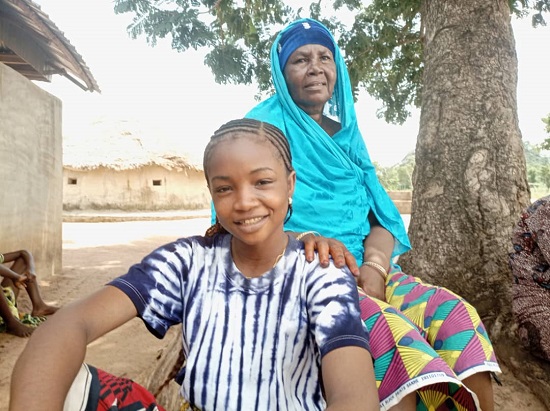
“I assist them to milk cows when on holidays. If I have the opportunity and I am given my own cows, I will set them up in one area and be giving them food so that I will be getting money,” she said.
Advertisement
ARE CROSS-BREED COWS THE FUTURE OF DAIRY?
Atunbi Deborah, a cross-breeder, said the process is safe because it doesn’t have any side effects. She also noted that it is just like a male animal mounting the female one. According to her, nothing has been modified about the semen and the genetics is still the same. She added that the success rate is high and farmers get the kind of outcome they want from the breeds.
Advertisement
“Some of the benefits are that you have the chance of getting your desired trait. It is cost-effective in the sense that you don’t have to spend money on keeping so many cows, feeding them and at the end of the day they are not producing,” she said.
“From some of the results we have got, we discovered that a cow can produce 10 litres of milk while the white local cows that we know as Yakanas produce a maximum of one litre in a day.”
Advertisement
Olayiwola Adekunle, general manager of dairy development at FrieslandCampina WAMCO, noted that the company has supported local farmers to produce healthy milk. According to him, the centre started with 400 litres. Currently, it collects about 41,000 litres per day.
“We started with their local cows but today we have a lot of cross-breeds. As of today, we have over 771 cross-breeds born to the pastoralist community,” he said.
Advertisement
“Instead of keeping 100 cows and getting 100 litres of milk, we want to help them keep 10 cows of cross-breeds and get 100 litres. We have also supported them with different boreholes to allow cows to drink clean water, and aside from that it helped the human aspect of it.”
In March, Niyi Adebayo, minister of industries, trade and investment, said Nigeria’s estimated annual milk production stands at 672 million litres as against an annual demand of 1.6 billion litres from a population of over 180 million. This means the current milk production in the country cannot meet local demand. This gives credence to why the bulk of milk consumed in the country is imported. According to the Central Bank of Nigeria (CBN), Nigeria spends between $1.2 billion and $1.5 billion importing milk and dairy products every year.
In an interview, Adebimpe Aderounmu, head of operations of Development Practice Academy (DEPRA), said Nigeria needs to work on improving its local breeds to forge ahead. He noted that the importation of animals is not the way forward.
Cross-breeds are known to easily adapt to harsh local weather and terrains. Farmers like Moyosore have confirmed that cross-breed cows increase milk productivity. But the question remains on if crossbreeds will provide a lifeline for the fledgling dairy industry.


